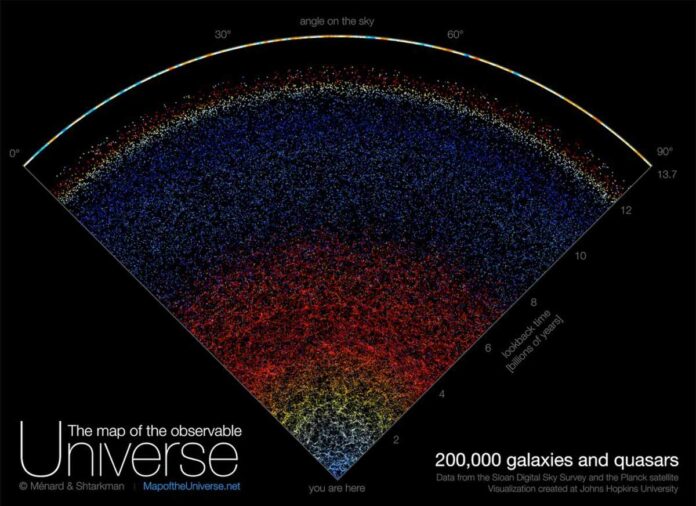The Sun is the large orange dot in the centre of this three-dimensional Universe atlas.
The local stars around the Sun are first shown, colour coded according to whether they are cool red stars or hot blue stars. The view will gradually zoom out, revealing open clusters of stars in our galaxy (red dots), the entire flat disc of the Milky Way with globular clusters of stars surrounding it (purple dots), and finally the Local Group of other galaxies surrounding our own (blue dots).
When the view is zoomed out to include both the Sun and the centre of the Milky Way, a white line connects the two, providing a sense of the Milky Way’s geometry.
You can manually rotate the simulation at any time by clicking and dragging it. To manually zoom in and out, use the top slider or the scroll-wheel on your mouse. Click on an object to learn more about it.
The simulation above only depicts objects that we can see. This means that it favours showing nearby objects because they are bright and visible in the sky.
The Sun may appear to be at the centre of a small spherical swarm of stars, with open star clusters forming a larger swarm also centred on the Sun.
The opposite side of the Milky Way, on the other hand, may appear devoid of stars and star clusters. Of course, the Milky Way is full of stars and clusters, but the majority of them are unknown.
As a result, the simulation not only demonstrates how the objects of the night sky fit into a 3D structure around the Sun, but it also demonstrates the limits of how far into the Universe we can see.

